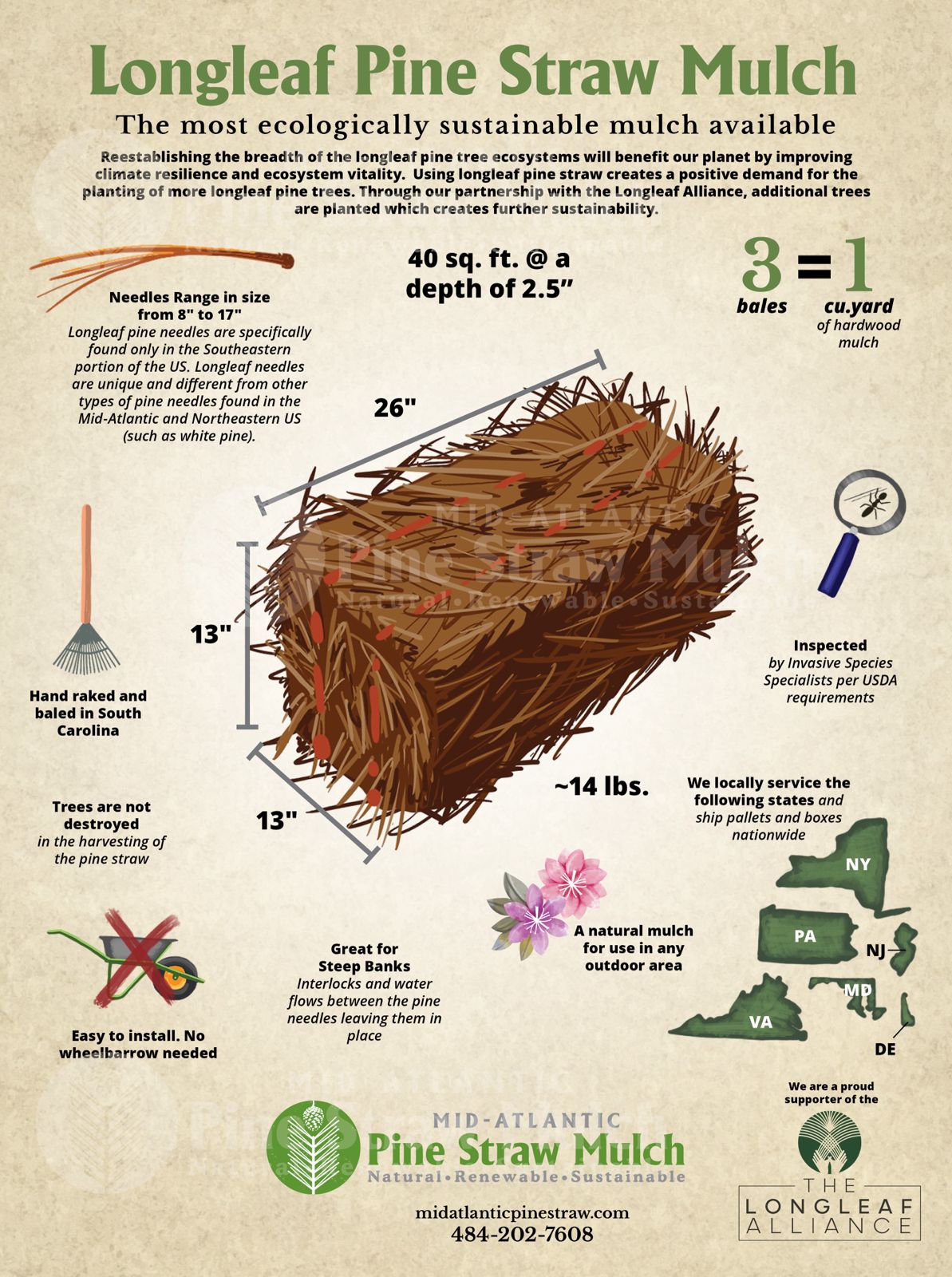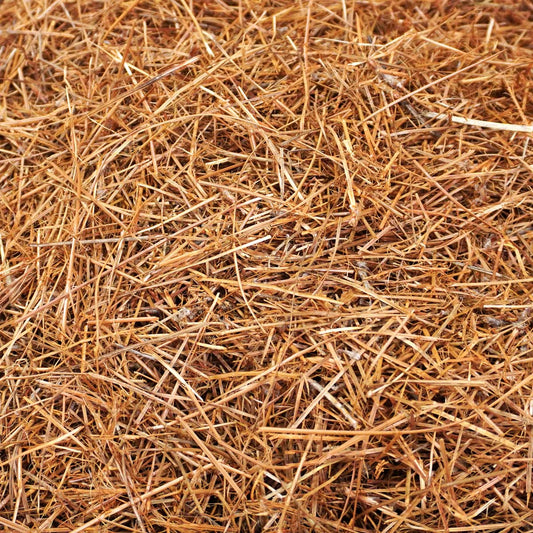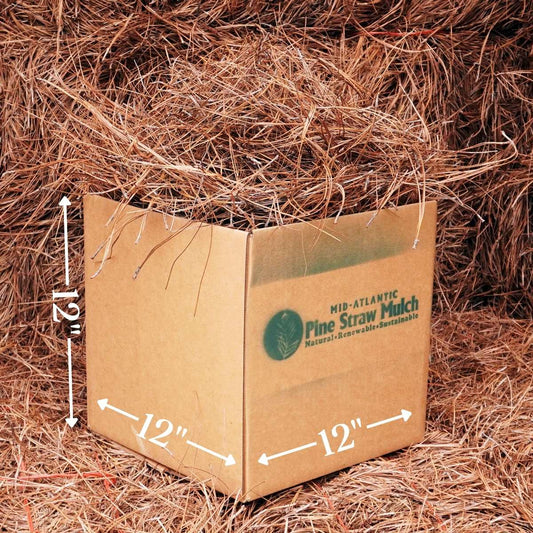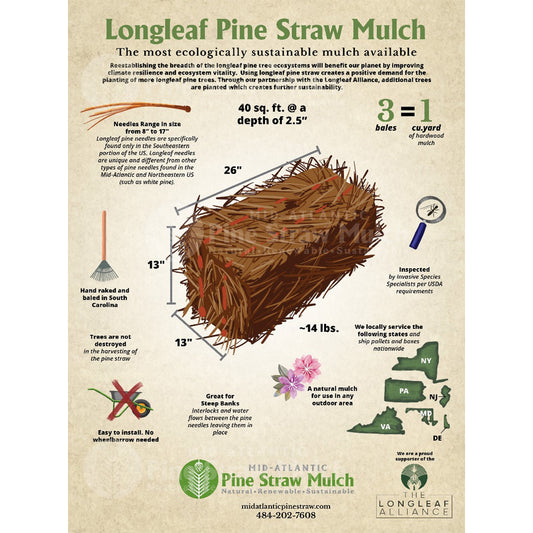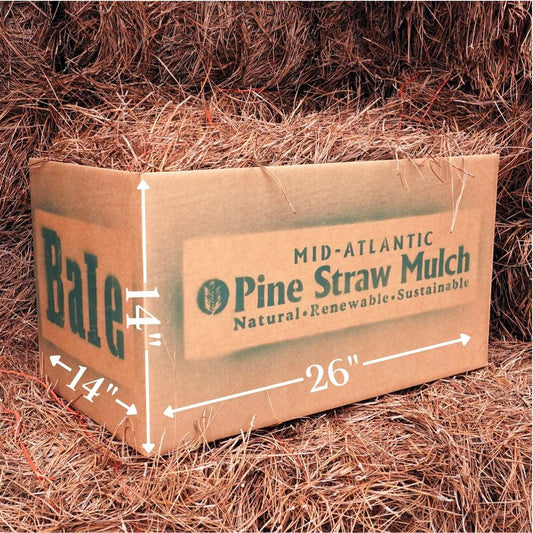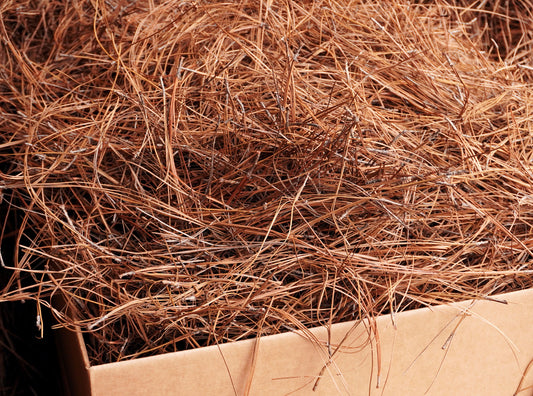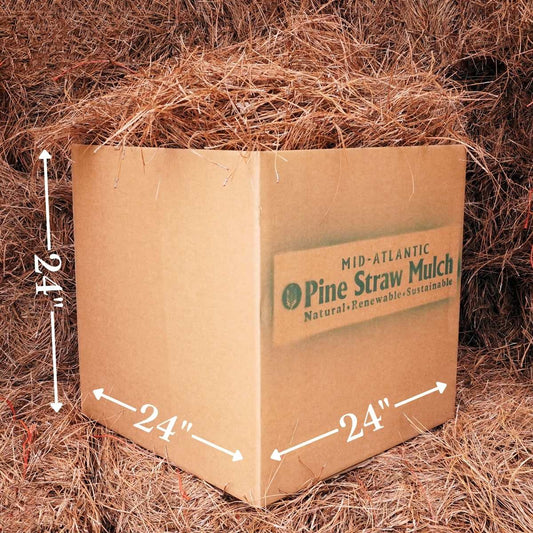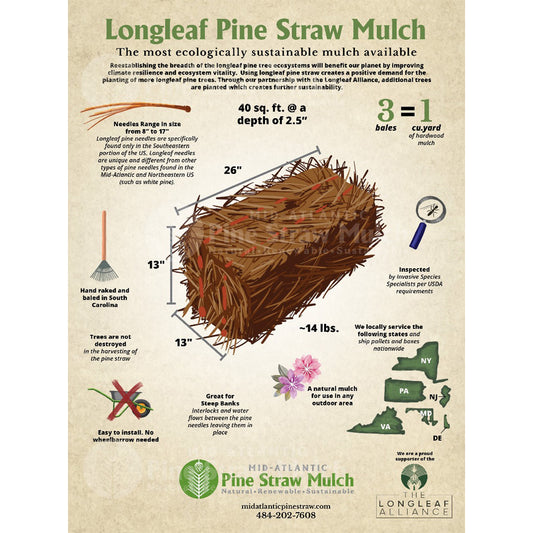Pine Straw collection
-
Shredded Pine Straw Bags of Mulch - 2 Cu. Ft. Bags (2 Bags per Box)
Regular price $79.95Regular priceUnit price / per -
Longleaf Pine Straw Mulch - Small Box (12"x12"x12")
Regular price $39.95Regular priceUnit price / per -
Longleaf Pine Straw Mulch - Bale Box (26"x14"x14")
Regular price $64.95Regular priceUnit price / per -
Longleaf Pine Straw Mulch - Extra Large Box (24"x24"x24")
Regular price $149.95Regular priceUnit price / per
Longleaf Pine Straw
Besides the environmental benefits, pine straw mulch also:
- Insulates tender roots from temperature extremes, in turn, keeping the soil warm during cold spells and, conversely, cool during hot spells.
- Conserves soil moisture by reducing water evaporation rates and moisture loss.
- Encourages water infiltration into the soil and reduces runoff.
- Eliminates erosion caused by wind and rain-splash impact.
- Protects against soil compaction by reducing the rain impact directly on the surface.
- Aids in promoting favorable soil balance for healthy root growth.
- Does not have to be removed. All you need do is put fresh straw on the top of old straw to revitalize the color and provide beds with new nutrients.
- Act as RENEWABLE RESOURCE
Quick Facts:
Appearance: Good to Excellent
Insulation: Good
Cost: Average (equal to in cost when comparing with premium hardwood bark mulches)
Thickness: 2” – 3”
Weed Control: Good
Water Penetration: Excellent
Moisture Retention: Good
Decomposition Speed: Slow
Durability: Good (outlasts other mulches because of resin content)
Comments: Often used with acid-soil plants
“Renewable Resource” and “Sustainability“…What are these words we are hearing so much about these days? Renewable resources are things on earth that can grow/reproduce again and again, and never run out (i.e. air, water, trees). Sustainability is, “Meeting the needs of the present without depleting resources or harming natural cycles for future generations”. It is all of our civic and moral duty to protect our earth and use products that are a Renewable Resource and contribute to the environment’s sustainability. The more demand that is generated for Pine Straw Mulch, the more Longleaf Pine Trees will be planted to supply this demand. Trees are not harmed or destroyed when harvesting Pine Straw, as the needles are shed from the tree, fall to the ground and are raked and baled by hand. This is one of the reasons is why Pine Straw is the one of the most ecologically and environmentally friendly choices when choosing a mulch.
Benefits of Pine Straw Mulch
Benefits of Pine Straw Mulch
Pine straw has been a popular landscape ground cover throughout the South for the past 25 years. It is one of the most widely used mulches for all size projects from residential flowerbeds to industrial complexes and highway landscapes. Longleaf Pine Straw is an aesthetically appealing reddish/brown mulch that can be used in a variety of landscapes to enhance the texture, color, contrast, weed-deterrent capabilities and uniqueness of your landscaping. The fine texture and uniform color of pine straw is more aesthetically pleasing to some people than traditional wood bark mulch.
Mulches act as a catalyst in creating favorable growing conditions for plants. In other words, Pine Straw helps create the necessary environment to stimulate healthy plant development. Pine Straw promotes uniform plant growth and slowly decomposes to release organic nutrients that enrich the soil. Insulation is a key Pine Straw characteristic, and as a result, a plant’s root system and the lower stems of plants stay cooler in warm weather and remain warmer in colder weather. A layer of Pine Straw helps keeps the roots of tender plants from freezing.
Pine Straw interlocks and holds together during hard rains and heavy winds, even on sloping landscapes. Because Pine Straw interlocks, pine straw will not wash out of beds like other mulches. Whereas many mulches do not allow water to runoff (rain and/or irrigation), pine straw allows water to flow through it to the soil underneath. The same quality by which pine straw allows for water to flow through it also helps to conserve soil moisture by reducing water evaporation rates and moisture loss. Pine straw also has the added benefit of reducing erosion caused by wind and rain-splash impact and adhering well to slopes; thus, not washing away as easily as other mulches during heavy rain.
Pine needle mulch (pine straw) is the number one mulching material used in landscape plantings in the Southeastern U.S. Because pine straw is actually a leaf (needle), it benefits the environment in the same way that decomposing leaves benefit the forest floor, by recycling nutrients and maintaining soil organic matter in a compost-like fashion. NO Trees are destroyed in the process of harvesting pine needles. The carbon footprint for harvesting pine needles vs. other mulches is very low. The majority of pine needle harvesting is done so by hand by manually using a rake. The pine straw is raked into piles, and then placed into a wooden box for baling.
